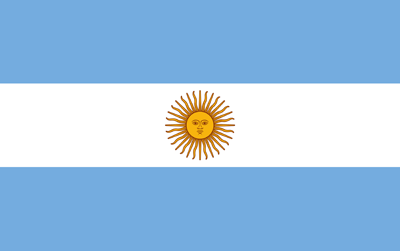Pakistan Local Cotton Market:
(local cotton prices remain steady amid weather delays and limited high-quality supply, with many buyers opting for imports. Global demand for cotton is weak due to economic woes but anticipated U.S. cotton shipments later this year may boost prices. The international market’s influence will likely cause local prices to decline with new crop arrivals)
1- In the local cotton market, prices have held steady amidst rainy weather and a limited supply of high-quality cotton.
2- The monsoon has further postponed the arrival of the new crop, boosted price and kept market activity moderate. Although a few buyers requiring immediate stock are making purchases, the majority are holding off until the new cotton which is anticipated to arrive, likely starting from end-July.
3- Currently, many buyers are prioritizing cotton imports, as the current prices of USA and Brazilian cotton are workable.
4- Prices are anticipated to decline with the arrival of new cotton, as the international market isn’t supporting the local market. Moreover, numerous buyers are showing interest in imported U.S. cotton, which is currently priced similarly to local cotton.
5- ICE cotton witnessed mixed trend this week. The trading began with steady to up trend due to weaker dollar index and higher crude oil prices. But disappointing export sales data and decline in cotton drought affected area dampened market sentiments. The market settled with mild decline or near to flat.
6- The Australian and Brazilian crops will be the first to enter the export market, while the U.S. will need to wait until much of that cotton is sold before its own crop can move. Some experts predict that from September to November, there will be large shipments of U.S. cotton, which will likely drive-up New York prices.
7- Despite the bearish U.S. forecast, the USDA reduced global ending stocks by 900,000 bales from the June report, lowering carryover from 83.5 to 82.6 million bales. This reduction is due to smaller crops in India and
8- Pakistan and lower beginning stocks in major exporting countries. The estimate for smaller world stocks also includes a modest increase in global consumption by 200,000 bales.
9- This highlights the weak global demand for cotton, driven by ongoing U.S. and world economic woes. Despite some positive economic reports, cotton consumption remains low because consumers are not buying cotton-rich goods.
10- Last week, cotton prices in Punjab and Sindh showed firmness from Rs 17,900 to Rs 19,600 per maund, (USC 0.79~0.87 lbs). In Sindh, cotton rate was Rs 17,900 to Rs 18,500 per maund, while in Punjab it ranged from Rs 18,800 to Rs 19,600 per maund. KCA was same at Rs. 18,300 per maund and PSF up Rs. 5 to at Rs. 380 PKR/kg.
Local Yarn Market:
(The local yarn market outlook remains expectant with stable prices and dependent on end-user demand and stability in regional cotton prices)
1- The domestic yarn market remained stable with slow activity & unvarying yarn prices.
2- Mills are under pressure from rising energy and gas costs and a lack of ready inventories.
3- PSF prices remained stable this week and are expected to continue stable by next week.
4- The Faisalabad market had usual activity and consistent order bookings for viscose and fine-count yarns. Cash flow shortages remain a challenge, however.
| Count | Price in Pak Rupees / 10 LBS | Price US$/Bale |
| 16/1 Carded Weaving | 3350 – 3400 | 485 – 490 |
| 20/1 Carded Weaving | 3450 – 3550 | 500 – 515 |
| 30/1 Carded Weaving | 3850 – 3950 | 560 – 570 |
| 20/1 Combed Weaving | 4000 – 4150 | 580 – 600 |
| 30/1 PC Carded Weaving 52:48 | 3350 – 3500 | 485 – 505 |
| 40/1 Combed Compact Weaving | 4600 – 4700 | 665 – 680 |
| 60/1 Combed Compact Weaving | 6150 – 6300 | 890 – 910 |
| 80/1 Combed Compact Weaving | 8100 – 8300 | 1175 – 1200 |
| 40/1 CVC Carded Weaving 60:40 | 4150 – 4250 | 600 – 615 |
Export Yarn Market:
(The export yarn market is experiencing softness and slow activity, but the expected drop in cotton prices may lead to substantial future orders. Suppliers face challenges due to stock levels and high energy costs, while European customer remains moderate)
1- The export yarn market showed softness regarding prices and a slow sentiment, characterized by bearish business activity.
2- In China, market is getting improve and we might see another spree of buying in August.
3- Local cotton prices were firm throughout this week, international cotton prices were remained soft in this week , local cotton expected to drop after arrival of handsome cotton in local market , however rainy season may impact on rise due to damage of quality cotton.
4- Suppliers are in a difficult position due to existing stock levels and high energy costs, which add pressure and reduce the viability of exports.
5- European customers showed improved business activity as decent number of inquiries were received. Orders were closed with slight negotiations with their chosen suppliers.
6- It is expected that the export market will receive substantial orders in the near future due to the decrease in cotton prices.
| Export Yarn Prices | ||||||||||||||||
|
Local Fabric Market:
(Moderate business activity was observed in local fabric market. Looking ahead, we anticipate slow market sentiments to prevail, with firm prices and a tendency for upward movement)
1- The local textile market exhibited a firm trend this week, with moderate activity observed for both narrow and wider-width fabrics.
2- Local brands are gearing up for their winter collections, which has bolstered market activity.
3- Orders were materialized after tough negotiations, maintaining last week’s price levels.
4- Currently, the majority of weavers have booked their narrow-width looms until early August 2024. Wide-width looms have reached full capacity until the end of August 2024. Special looms are pre-booked until the end of August/early September 2024, with deliveries scheduled thereafter.
Export Fabric Market:
(Business activity for export fabric remained good, mainly from Far Eastern countries, resulting in decent bookings. It is expected that business activity will remain good in the days to come and prices will remain stable for the next couple of weeks until the new cotton arrivals come into full swing)
1- The export fabric market was active during the week under review.
2- Good flow of inquiries were discussed from Far Eastern markets resultant bulk order placement with selected suppliers.
3- The asking prices were stable due to stable raw material costs; however, the orders were materialized at 3~4% lower than the offered prices.
4- Currently good suppliers are booked till end of Aug and average suppliers are booked till mid of Aug and offering onward deliveries.
5- Flow of inquiry from USA and Europe was limited due to slow demand in general however urgent orders were placed both in narrow and wider width
6- The suppliers for wider width are comfortable in sales and offering End Sep / Early Oct onward deliveries.
7- The prices for wider width mainly for fine counts were soft due to good price of imported yarns.
| Local and Export Fabric Prices
| ||||||||||||
|
Bed Linen and Towel:
(A continuation of Last week – (Worsening situation – Despite good flow of inquiries in home textile. The order confirmations are still very low due to constant high energy costs and little consideration of Lower yarn rate anticipation. High inflation, rising energy costs and very competitive target prices are badly affecting HT industry)
1- A continuation of relative better activity in terms of demand; good flow of inquiries and orders observed in current week.
2- The critical deadlock between Customer targets and supplier offered prices remain a bone of contention in order conformations.
3- The industry is forced to make bookings and locking prices at loss. Although Yarn rate is anticipated to fall down in coming weeks but Marketing concerns are not taking this anticipation into account in costing parameters.
4- On the other hand, energy Tariffs are constant source of high costs which is very severely effecting order confirmations.
Garments:
(Overall, clothing factories are running between sixty and seventy percent of their capacity for production and are attempting to fill the void by taking on more orders. A positive indication for future purchases is that certain brands are also working on FW25 advancements)
1- The Pakistani apparel industry isn’t able to run at its maximum potential because they do not think that brands would have a significant demand.
2- Most of the export clients do not place substantial orders, such as those for the entire season.
3- The bulk of garment manufacturers are running at sixty to seventy percent of their capacity, and they are actively seeking further orders to refill the capacity that is not being utilized.
4- Orders are placed in segments, only considering urgent requests. A few European and American businesses are working on their FW25 offerings. By the end of September, factories may usually start taking orders, however, this will depend on the kinds of apparel and accessories required.
Crude Oil:
1- Crude Oil prices opened at USD 82.90 with lower level as compared to last week closing figures.
2- In this week, crude oil prices showed mix trend and closed on slight lower side by the end of week.
3- In last day of the week, Crude Oil price closed at USD 82.21 with decrease of 0.69 USD cents as of opening figure of week.
| Opening of Week | Closing Of Week | Change | |
| Price | 82.90 | 82.21 | -0.69 |
Exchange Rate:
1- In last week values of Pak rupee appreciated against US Dollar’s, other major currencies showed mix trend in both interbank and open markets.
2- At the end of week, Euro closed on a positive note with figure of 1.09 and British Pound also closed on positive note with figure 1.29 against USD.
| Selling | Buying | |
| LC Sight | 276.22 | 276.17 |
| LC 120 Days | 261.33 | 261.28 |
| Open Market | 281.23 | 275.72 |
New York Cotton Future:
The New York Cotton futures started the week lower than the previous week’s closing figures.
1- NYCF showed a downward trend in this week, hence rose on last session of the week and closed on higher side by the end of week.
2- October 2024 closed at 69.48, experiencing a drop of 57 points from the previous week.
3- December 2024 closed at 71.27 showing a higher trend of 22 points from the previous week.
4- March 2025 closed at 73.10, rose by 26 points from the previous week.
5- May 2025 closed at 74.47, increase of 26 points from the previous week.
Liver Pool Indices:
1- Liverpool Index A was opened at 82.75 on same levels from the previous week of closing figure.
2- In this week Index “A” showed downward trend and closed on lower side by the end of week.
3- At last day of the week, LPI “A” closed at 81.50 with decrease of 125 points.
| Opening of the Week | Closing of the Week | Change | |
| Index A | 82.75 | 81.50 | -1.25 |







